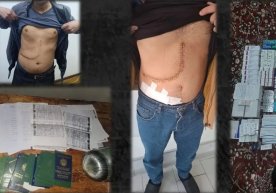
Recently, there has been an increase in legislative changes aimed at protecting human health and strengthening the medical approach in procedures related to criminal punishment. Among them is the plan to introduce significant amendments and additions to the procedure for applying medical coercive measures to persons deprived of liberty and suffering from narcological diseases (in particular, chronic alcoholism, drug addiction, or substance abuse), reported norma.uz.
Let’s take a closer look at what changes are foreseen in the relevant draft regulation.
Labor therapy to be added to medical coercive measures
The draft emphasizes that if a prisoner in a correctional facility has a narcological diagnosis, based on their physical condition and medical recommendations, labor therapy may be applied to them. This method is considered one of the effective ways to overcome addiction to psychoactive substances.
Diagnosis and treatment period determined within 3 days
A person subjected to medical coercive measures is examined by a narcologist or psychiatrist within 3 working days after being admitted to the correctional facility. An official diagnosis is established, based on which the overall duration of compulsory treatment is determined.
Which institution treats under what procedure?
Medical coercive measures for prisoners serving sentences are implemented in specialized institutions under the penal system. If the prisoner is held in a settlement colony, such medical measures are carried out in narcological institutions under the Ministry of Health. In both cases, treatment is carried out based on general practice.
Treatment duration clearly defined
The course of compulsory medical treatment must last at least 6 months and no more than 18 months. During this period, the patient will remain under continuous supervision.
As for inpatient treatment: patients suffering from chronic alcoholism are hospitalized for a minimum of 45 days, and those with drug or substance addiction — for a minimum of 60 days.
A medical file is opened for every patient
During the treatment process, a stationary medical record is filled out for each prisoner. It includes all necessary information about the patient: diagnosis, provided services, previous treatments, and other clinical data.
A special medical commission operates
A special medical commission makes the decision regarding treatment in the correctional facility. The head doctor of the institution (head of the treatment-prophylactic department) chairs the commission. It includes a narcologist or psychiatrist and general practitioners (therapists).
If the prisoner is released before completing treatment…
If a prisoner is released before completing the compulsory treatment course, the facility administration is required to notify the relevant authorities in a specific manner. In particular:
– If they are released after serving the full term of punishment — notification must be sent 10 days in advance;
– If they are released early on parole, through amnesty, or by pardon — notification must be sent within 3 days.
Along with the notification, a copy of the inmate’s outpatient medical record is also sent. This document is submitted to the internal affairs authorities and the medical department of the Penal Execution Department.
Conclusion: human health comes first
This draft regulation is aimed not only at strengthening the punishment measure but also at ensuring that individuals with narcological diseases return to society healthy and stable. All measures — from labor therapy to inpatient treatment — play a vital role in restoring health and preventing repeat offenses. Read “Zamin” on Telegram!
Ctrl
Enter
Found a mistake?
Select the phrase and press Ctrl+Enter Related news
Information
Users of Меҳмон are not allowed to comment this publication.
Users of Меҳмон are not allowed to comment this publication.














